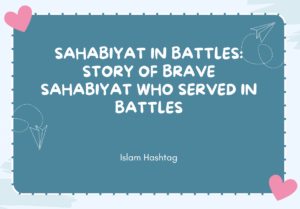Which are the Islamic Charity with 100 percent donation policy?
Wishing to give charity to organisations with 100% donation policy? It’s important to note that while many charitable organizations strive to allocate a significant portion of donations to their programs and causes,but it can be challenging to find organizations that guarantee 100 percent of donations go directly to their programs. Administrative and operational costs are a reality for most charities.

Quran on Charity
Charity with 100 percent donation policy
However, there are organizations that aim to keep overhead costs to a minimum to maximize the impact of donations. Here are a few Islamic charities known for their low overhead and commitment to channeling donations toward their programs:

- Penny Appeal: Penny Appeal is known for its low administrative costs and commitment to maximizing the impact of donations. They strive to ensure that a high percentage of funds go directly to their projects.
- Baitulmaal: Baitulmaal is an international humanitarian organization with a reputation for efficient use of donations. They focus on providing aid to those in need without excessive overhead costs.
- Zakat Foundation of America: Zakat Foundation of America is dedicated to utilizing donations effectively for humanitarian projects. They prioritize transparency and low administrative expenses.
- Muslim Global Relief : Is Muslim Global relief 100% donation charity? It says in their website,it is trusted for over 20 years by donors world-wide in distributing donations and it ensures your money reaches those who need it quickly, effectively and with full transparency.

Note : The screenshot is from their respective policy. Always verify the latest financial information and donation allocation policies of any charity you are interested in supporting, as these details can change over time. Additionally, you may consider reaching out to these organizations directly or visiting their websites to learn more about their specific financial practices and transparency measures.
Understanding the Administrative and Operational Costs of usual Charity
Administrative and operational costs are a reality for most charities, but they are not inherently negative. These expenses are vital for ensuring the charity’s efficiency, effectiveness, and sustainability. By being transparent and educating donors about the necessity of these costs, charities can build trust and support for their ongoing missions. Understanding and appreciating the role of these costs can lead to more informed and supportive donor engagement, ultimately enhancing the charity’s ability to make a positive impact.
Administrative Costs
Administrative costs refer to the expenses related to the overall management and general functions of the charity. These include:
- Salaries and Wages: Payment for staff involved in administration, such as executives, human resources, finance, and other support roles.
- Office Supplies and Equipment: Costs for items like stationery, computers, and office furniture.
- Utilities and Rent: Expenses for maintaining office spaces, including electricity, water, heating, and rent.
- Professional Fees: Payments for services such as legal, accounting, and auditing.
Operational Costs
Operational costs are those directly associated with running the charity’s programs and services. These include:
- Program Supplies: Items needed to carry out specific projects or services, such as medical supplies, educational materials, or food.
- Transportation: Costs for vehicles, fuel, and travel expenses required for program delivery.
- Training and Development: Expenses for training staff and volunteers to enhance their skills and efficiency in delivering services.
- Communication: Costs for phone, internet, and other communication tools necessary for coordinating activities and outreach.
Importance of Administrative and Operational Costs
Ensuring Efficiency and Effectiveness
Administrative and operational costs are essential for the efficiency and effectiveness of a charity. Without proper administration, even the most well-intentioned programs can falter due to poor management, lack of coordination, or insufficient resources. These costs ensure that:
- Funds are Managed Properly: Ensuring transparency and accountability in financial matters.
- Programs are Coordinated: Efficiently managing resources and activities to maximize impact.
- Staff are Supported: Providing necessary tools, training, and motivation for staff to perform their roles effectively.
Building Trust and Credibility
A well-managed charity is more likely to gain and retain the trust of donors, beneficiaries, and other stakeholders. Transparency about how funds are used, including administrative and operational expenses, helps build credibility and fosters long-term support.
Sustainability and Growth
Investing in administrative and operational infrastructure is crucial for the sustainability and growth of a charity. This includes:
- Technology and Systems: Implementing robust IT systems for better data management and communication.
- Fundraising and Marketing: Developing strategies to attract and retain donors, ensuring a steady flow of resources.
- Monitoring and Evaluation: Continuously assessing and improving programs to enhance their effectiveness and impact.
Addressing Misconceptions
Transparency and Communication
One common misconception is that administrative and operational costs are a sign of inefficiency. However, this is not necessarily the case. Charities should strive to be transparent about these costs and explain their importance. Effective communication can help donors understand that these expenses are necessary for the charity to function and achieve its goals.
Balancing Costs and Impact
While it is essential to keep administrative and operational costs in check, it is equally important not to undermine the quality and reach of the charity’s programs. A balanced approach ensures that funds are used efficiently without compromising the impact of the charity’s work.
Conclusion
Consider reaching out to these organizations directly or visiting their websites to learn more about their specific financial practices and transparency measures.
Discover more from Islam Hashtag
Subscribe to get the latest posts sent to your email.




